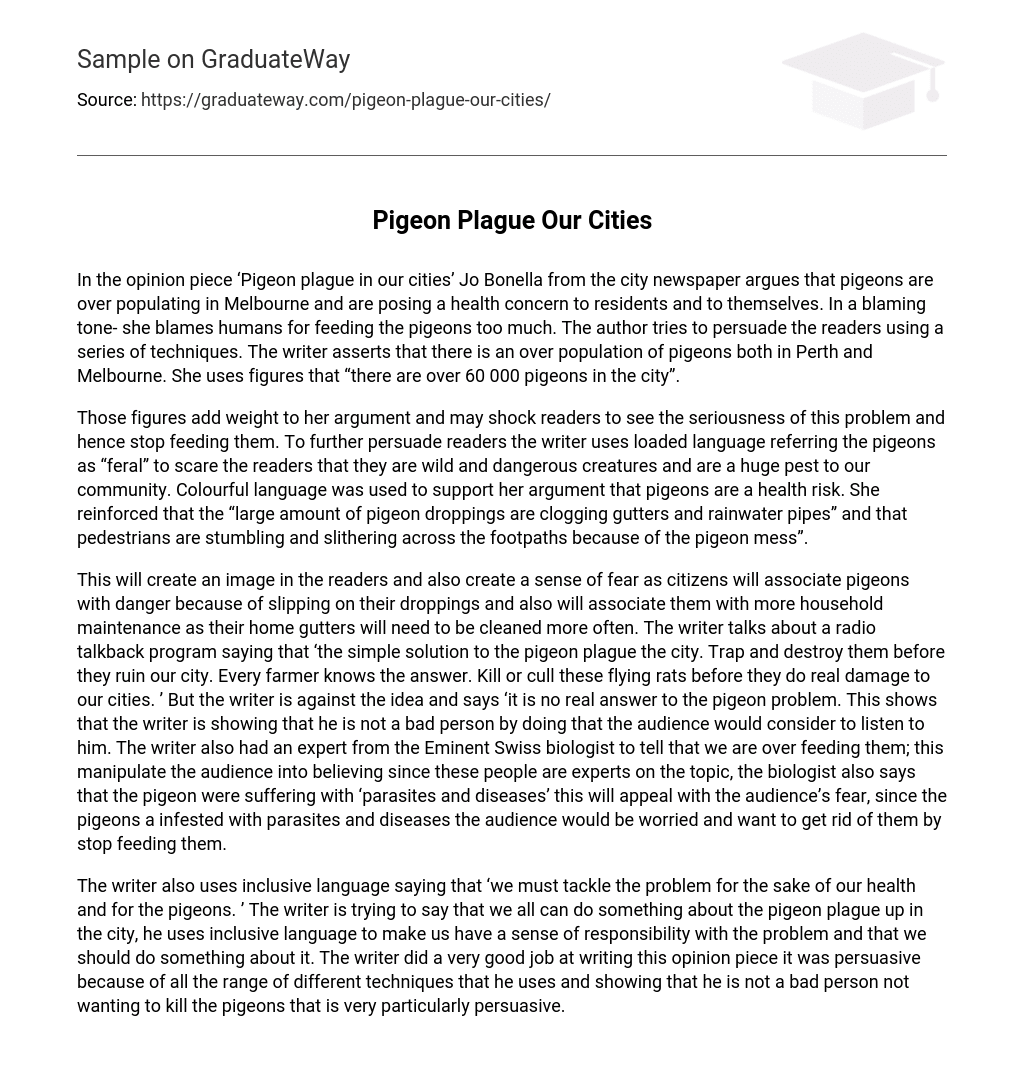In the article titled ‘Pigeon plague in our cities’, Jo Bonella, a writer for the city newspaper, expresses concern about the increasing population of pigeons in Melbourne. Bonella blames humans for the issue, emphasizing that they are feeding the pigeons excessively. The author employs various persuasive techniques to convince readers of the problem. Additionally, Bonella states that both Perth and Melbourne are experiencing an overpopulation of pigeons, providing statistics that indicate there are more than 60,000 pigeons in the city.
The writer presents compelling evidence to support her argument and potentially shock readers into taking action. The use of loaded language, referring to the pigeons as “feral,” serves to instill fear in readers, emphasizing the idea that these creatures are wild and pose a significant threat to our community. Additionally, colorful language is employed to highlight the health risks associated with pigeons. The writer emphasizes that an excessive amount of pigeon droppings is causing clogged gutters and rainwater pipes, while pedestrians are having difficulty navigating sidewalks due to the mess created by the pigeons.
The text asserts that creating an image of fear in readers is necessary to associate pigeons with danger, specifically slipping on their droppings, as well as increased household maintenance due to more frequent gutter cleaning. The text references a radio talkback program promoting the idea of trapping and destroying pigeons to prevent damage to the city. However, the writer opposes this solution, claiming it is not a real answer to the pigeon problem. By presenting this opposing view, the writer strives to appear relatable and empathetic to the audience. Furthermore, an expert Swiss biologist is cited to support the argument that overfeeding pigeons is a concern. The biologist suggests that pigeons suffer from parasites and diseases, aiming to play on the audience’s fears and encouraging them to stop feeding the birds in order to eliminate them.
The writer employs inclusive language in order to emphasize our collective responsibility to address the problem of the pigeon plague in the city, asserting that “we must tackle the problem for the sake of our health and for the pigeons.” This persuasive opinion piece effectively conveys the writer’s stance by utilizing a variety of techniques and successfully dispelling any notion that they are unsympathetic towards the pigeons, which adds further persuasion.





